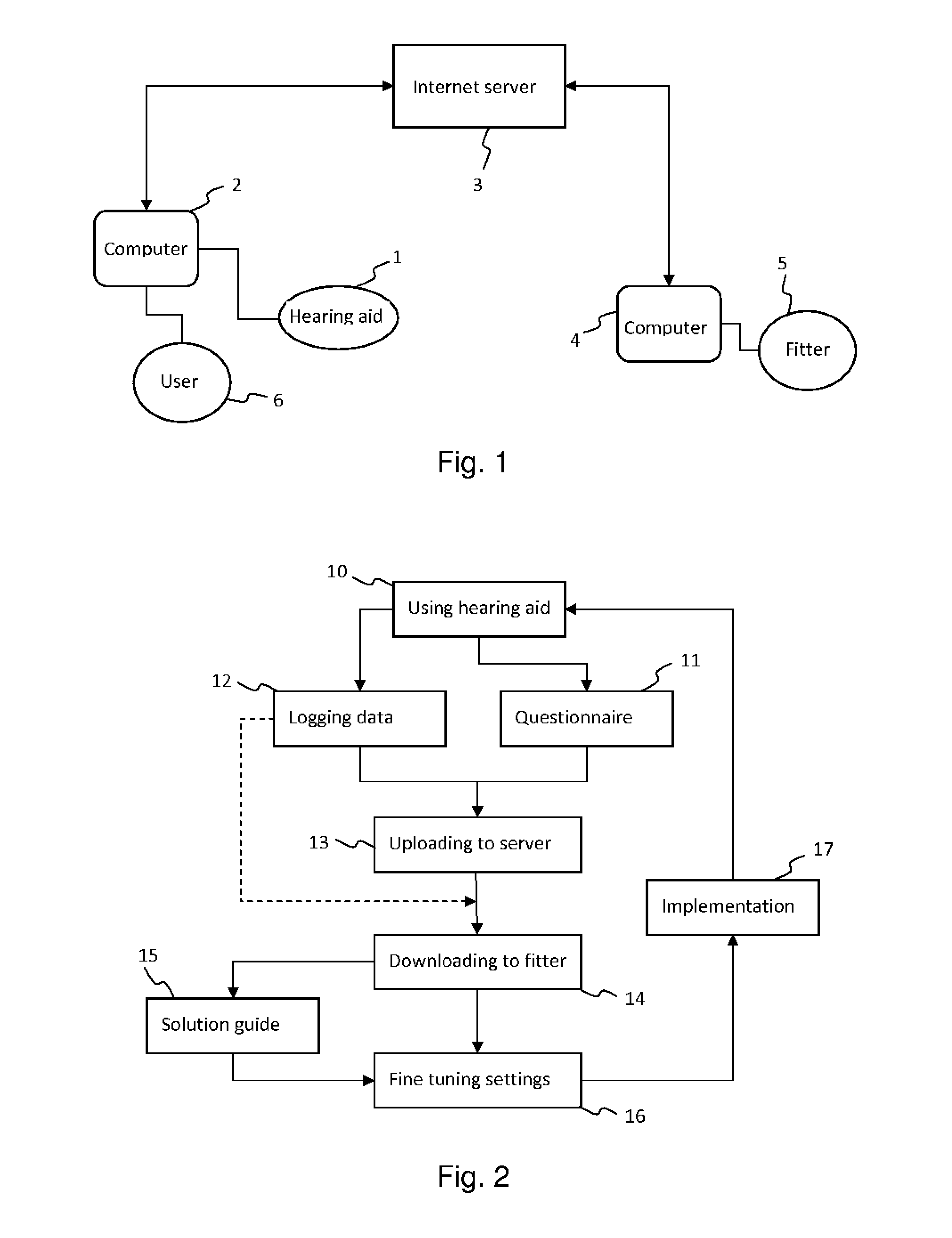Method for fine tuning a hearing aid
a hearing aid and fine tuning technology, applied in the field of hearing aids, can solve the problems of not providing specific information on how the user is used, and achieve the effect of facilitating analysis of responses, easy to relate, and easy to be available for statistical analysis
- Summary
- Abstract
- Description
- Claims
- Application Information
AI Technical Summary
Benefits of technology
Problems solved by technology
Method used
Image
Examples
Embodiment Construction
[0033]FIG. 1 illustrates one of several possible arrangements for carrying out the method of the invention. The method includes a recording of the audiogram of the hearing aid user 6 and based on this selecting a fitting setting for the hearing aid 1. This setting is implemented in the hearing aid, using the hearing aid by the hearing aid user for a period of time. The hearing aid 1 is provided with means for logging data representing statistical data on the sound environment in which the hearing aid 1 is being used.
[0034]The hearing aid 1 is preferably connectable to the internet, either directly, or through an external unit such as a first computer 2. The first computer 2 may be an ordinary personal computer or any unit, such as a mobile phone, which is connectable to the internet and which can be provided with, or running via an internet browser, software for filling out a questionnaire. The logged data may be transferred through an internet server 3 to a second computer 4 of a h...
PUM
 Login to View More
Login to View More Abstract
Description
Claims
Application Information
 Login to View More
Login to View More - R&D
- Intellectual Property
- Life Sciences
- Materials
- Tech Scout
- Unparalleled Data Quality
- Higher Quality Content
- 60% Fewer Hallucinations
Browse by: Latest US Patents, China's latest patents, Technical Efficacy Thesaurus, Application Domain, Technology Topic, Popular Technical Reports.
© 2025 PatSnap. All rights reserved.Legal|Privacy policy|Modern Slavery Act Transparency Statement|Sitemap|About US| Contact US: help@patsnap.com


